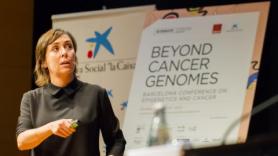1. The genome: a 3-D pop-up
The metaphor that compares DNA to a book implies imagining it is a linear story made up of letters. However, is much more complicated. In reality, it is more like a 3-D pop-up where some regions (pages) can end up interacting with others that seem very far away if we are only looking at the sequence. And in this spatial confirmation, it can be folded more or less compactly, showing or hiding its information (thus allowing or prohibiting synthesis of the proteins it codes).
For Richard Young, professor at the Whitehead Institute and MIT in Cambridge and one of the top experts in studying gene regulation, “The structure of chromosomes is much more important than we used to think.” One of the things that have been seen is that there are nearly one million switches, located throughout the genome. These areas act as a key to lock or unlock regions of the DNA and allow or prohibit them from being read. However, "Chromosomes also tend to organize themselves into regions of approximately 1 million pairs of bases –letters– that have a similar structure in all cells." These regions form looping structures, separating themselves from neighboring regions so they can independently control the genes they contain. They are what have been called "insulated neighborhoods".
"The structure of chromosomes is much more important than we used to think"
This is important not only in terms of how a healthy cell works, but also in tumor cells. In fact, as Young quoted, “Oncogenes[2] −genes with the potential to cause cancer– are often activated in insulated neighborhoods whose boundaries have been disrupted.” Meaning those that have lost their looping structure, their independence.
[2] An oncogene is an abnormal or activated gene that comes from the mutation of an allele in a normal gene. Along with silencing tumor-suppressor genes, oncogenes can be responsible for turning a healthy cell into a malignant one that will develop a specific type of cancer.



